Everett Ship Repair Completes Refrigeration Refit on the MV Excellence

Everett, Wash. repair yard Everett Ship Repair said it recently completed hull repairs and upgrades of the MV Excellence, a steel-hulled mothership processing vessel built in the 1970s in Japan. The vessel, measuring 367.5 feet in length and 56 feet in width, is undergoing extensive upgrades to the onboard ammonia-based refrigeration system. The modernization of this system will provide additional refrigeration capacity to the vessel, without an increase in power demand.The new refrigeration equipment was installed in a large opening cut below the waterline, necessitating drydocking.
Partners Launch New Hull Maintenance Service

HullWiper has joined forces with International Paint, a subsidiary of ship hull paint and performance coatings specialist AkzoNobel, and underwater drone ROV specialist Orobotix to provide ship owners and operators with comprehensive hull care support in a new partnership named Intertrac HullCare.The partnership offers high-performance coating schemes from International Paint tailored for different vessel types and operating profiles, which are maintained using sustainable hull…
Alaska Marine Lines Upgrading Its Rail Barges
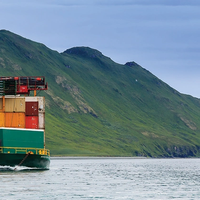
Alaska Marine Lines says four of its rail barges will receive new piping and ballast systems designed by Glosten with installation by Meridian Marine Industries."The rail barges are hitting 20 years of service and were in need of some upgrades," explains John Maketa, T-115 Port Engineer in Seattle. "These barges are the backbone of our rail operations and Central Alaska service. The updates will prepare them for another 20 years of service."Two barges, the Anchorage Provider and Whittier Provider, already have the new piping systems installed.
Bunker Adjustment Methodology Gets Okay
Maersk Tankers, owned by A.P. Moller Holding, uses the methodology Bunker Adjustment to distribute payments to pool partners based on the bunker consumption of their vessels compared to the pool average.The methodology has now been reviewed by Lloyd’s Register, confirming its conformity to recognised industry quality standards, said the product tanker company operating 164 vessels, one of the largest fleets in the product tanker industry.The Bunker Consumption methodology calculates how much fuel each pool vessel consumes in relation to the pool average and allows Maersk Tankers as a pool manager to distribute payments to pool partners accordingly…
Vigor Wins $7.3 Mln Contract for USCG Icebreaker Maintenance
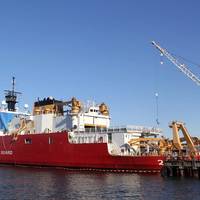
The U.S. Coast Guard’s polar medium icebreaker Healy arrived at Vigor’s Seattle shipyard in early January for maintenance.The $7.3 million contract includes sea valve renewal and overhaul, bow thruster modifications, ballast tank and underwater hull paint preservation and various machinery overhauls.The vessel will be at Vigor’s Harbor Island facility through June 2019.The 20-year-old Healy was built at Louisiana's former Avondale Shipyard and commissioned in 1999. It is one of two icebreakers currently in operation for the U.S. Coast Guard, along with 42-year-old heavy icebreaker Polar Star.
MOL Truth, Japan's 1st 20,000 TEU Containership, Delivered
Mitsui O.S.K. Lines (MOL) announced that one of world's largest containerships, the MOL Truth, was delivered at the Saijo Shipyard of Imabari Shipbuilding Co., Ltd. (President: Yukito Higaki, Headquarters: Imabari-shi, Ehime Prefecture) on October 31. The MOL Truth is the first containership with a capacity of over 20,000 TEU built in Japan, and the fifth in a series of six 20,000 TEU containerships that are operated by MOL. On October 25, it was named the MOL Truth. The new containership is 400m long, with a breadth of 58.5m, and has a loading capacity of 20,182 TEU. It will ply the Asia-Northern Europe trade as part of THE Alliance.
TCC, USC Join Forces to Cut Emissions
Leading Hong Kong ship-owner Tai Chong Cheang Steamship Co. (TCC) and the University of Southern California’s Viterbi School of Engineering (USC) announced a significant research breakthrough aimed at tackling harmful ship-source emissions today. The research was conducted as part of a research program focused on improving marine diesel combustion efficiency and the reduction of exhaust gases via the application of nanosecond pulsed generation technology. With the support of TCC, researchers at USC Viterbi’s Pulsed Power Research and Combustion and Fuels Research Laboratories have for the past five years focused upon improving combustion efficiency in vessel diesel engines.
Fuel Efficiency: The Way Forward

The Immediasea Shipping Debate Forum ‘Fuel Efficiency - The Way Forward’ was held in connection with the Nor-Shipping event in Oslo, Norway, in June. Leading the panel was Mark Fuhrmann from Blue-C who invited leading maritime executives to share their views on the future of shipping fuel-efficiency. Below are select quotes. “Our goal is clear, zero emissions. It will though take a while getting there.” He reminded the audience that “by 2050 we have to cut off CO2 production completely…
Ice – The Ship Hull Nemesis
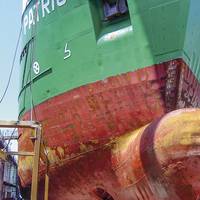
For as long as men have traveled and traded by water-routes, ice has been a nemesis for ships and their hulls. And with good reason since, on average, sea ice covers about 25 million square kilometers (9,652,553 square miles) of the planet—amounting to about two-and-a-half times the area of Canada. To wage ice battle, even in the earliest days of polar exploration, sailors used strengthened ships to ply icy waters. Naturally, these ships were originally wooden and based on existing designs but reinforced…
Underwater Hull Protection to Arctic Vessels

When it comes to protecting the hulls of ice-going vessels, the glassflake reinforced surface treated composite (STC) Ecospeed has proven to be remarkably durable, typically outperforming many specialized ice class paints. The fact that the coating is non-toxic is also particularly important for ice trading vessels where toxic AF coatings are rapidly scraped off and deposit their toxic ingredients in what are often particularly sensitive environments. Icebreakers and ships that trade in icy waters have their own very specific problems when it comes to protecting their underwater hull.
Hull Medic: Keep Coats Efficient
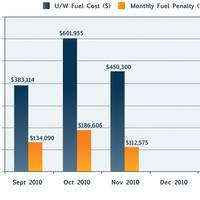
Is it possible to calculate the degree to which fouling and corrosion hinder a vessel’s efficiency? Can a ship operator use that data to determine the best time to clean or recoat the hull of his/her ship? Macsea’s answer to both questions: yes. The marine technology specialist has developed a solution called Hull Medic which they say measures the effects of hull fouling on a ship’s performance. Using a ship’s propeller as a power absorption measuring instrument, the fully automated Hull Medic estimates both water speed and shaft power.
MV Cellus

It’s not new, but is MV Cellus one of the cleanest ship in the world? Quick question: When the words “Green Shipping” and “German Maritime” are put together, is the first thought in your mind modern cruise ships? If you answered yes, it would be understandable; but partially right, partially wrong. Recently Maritime Reporter & Engineering News German-based contributing editor Dipl.-Ing. A simple German freighter is a bonafide trendsetter for clean ships operation, becoming the first seagoing ship to earn the “Blue Angel” eco-label, the oldest eco-labeling of Europe.
Ecospeed and the RRS Ernest Shackleton
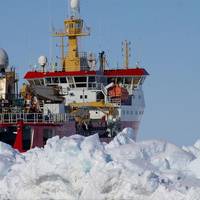
When British Antarctic Survey’s RRS (Royal Research Ship) Ernest Shackleton was drydocked recently in Denmark, the superintendent, engineers and paint specialists there to check the condition of the hull paint were amazed. After two seasons of battering its way through ice up to 2.5 meters thick with a high content of gravel and volcanic lava adding to its abrasiveness, the hull coating was virtually intact and undamaged. This was in strong contrast to the Shackleton’s previous drydocking…
MOL Adopts Low-friction Hull Paint
Mitsui O.S.K. Lines, Ltd. has adopted a new low-friction “Seaflo Neo” developed by Chugoku Marine Paint, Ltd. After analyzing the results of an onboard test with a newbuilding vessel, the company confirmed that the new paint offers improvements in fuel efficiency compared to conventional paints. This will contribute to the reduction of CO2 emissions from vessels. Friction between the hull and the water accounts for the majority of resistance as a vessel moves through the water. Reducing friction drag is a very effective way to reduce CO2 emissions during vessel operation. MOL has taken a proactive stance in developing and adopting a low-friction paint as one of its environmental initiatives.
MACSEA Measures Hull Paint Performance
Hull fouling causes drag-related speed loss and increased fuel consumption when more power is delivered in order to maintain ship schedules. Hull fouling is also a topic of growing environmental concern and international regulation as it relates to green house gas emissions and the carriage of aquatic invasive species on fouled hulls. To combat these issues, shipping companies are relying on modern hull coating systems like foul-release paint to provide a ready solution. Foul-release and most other types of marine hull paint are expensive and shipping companies have had few easy choices for accurately measuring paint performance and cost effectiveness before making fleet purchasing decisions.
New Solution for Measuring Hull Paint Performance
MACSEA offers an independent hull monitoring service designed to save fuel and reduce emissions by detecting hull fouling as early as possible. The new service, called Hull Medic, uses automatic onboard data acquisition to gather salient ship performance data and transmit it ashore for detailed analysis. Hull Medic will typically review 100,000’s of a ship’s data records per month, providing high-accuracy statistical analysis for earlier detection of hull fouling. Hull Medic calibrates each ship’s propeller as a power absorption dynamometer, using propeller characteristics and “clean-hull” ship performance data. The calibration establishes the unique relationship between speed, propeller rpm, and shaft power for each vessel.
News: Slow Speed Savings
Workboat operators face a tough time holding onto decent margins while caught in a squeeze between escalating operating costs and slumping day charter rates. How can you lessen the grip between today's rising costs and the battered charter market? Consider the benefit of slightly reduced boat speeds to capture big fuel savings. A vessel's fuel consumption is directly related to propulsion efficiency and hull resistance. Hull resistance is comprised of four factors; they are frictional, wave making, eddy, and air resistance. Other practical considerations also have considerable impact such as hull paint condition; sea state, currents, plus vessel loading and trim.
Lincoln Heads to Sea Following Nine Months in Dry Dock
Over the course of the last nine months, USS Abraham Lincoln (CVN 72) underwent several alterations, upgrades and installments, culminating in thousands of man hours and millions of dollars during its Dry-dock Planned Incremental Availability (DPIA) at Puget Sound Naval Shipyard, Bremerton, Wash. As Lincoln headed back to sea, the DPIA came to a close on a high note June 26. “From a ship’s force work package perspective, the DPIA was a resounding success and greatly exceeded all expectations,†said Lt. Cmdr. Jim Pyle, Lincoln’s maintenance manager. The $260m overhaul and improvements to Lincoln were the combined effort of Lincoln’s Sailors and Puget Sound Naval Shipyard and Todd Pacific Shipyard, who were the primary contractors on the job.





